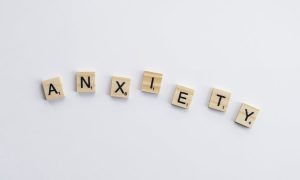In recent years, the landscape of education has undergone a significant transformation, sparking a debate between traditional classrooms and online education. As technology advances and societal needs evolve, educators, students, and parents are increasingly faced with the question of which approach is more effective for learning. This article explores the strengths and weaknesses of both methods, aiming to provide a comprehensive comparison for those navigating the educational terrain.
Traditional classrooms have long been the cornerstone of education, offering a structured environment where students engage directly with instructors and peers. This face-to-face interaction fosters a sense of community and collaboration, allowing for immediate feedback and support. In contrast, online education has surged in popularity, especially in the wake of the COVID-19 pandemic, offering flexibility and accessibility that traditional settings often struggle to provide. As we examine both approaches, it becomes clear that each has unique advantages and drawbacks that cater to different learning styles and circumstances.
One of the primary advantages of traditional classrooms is the social interaction they facilitate. Students benefit from real-time discussions, group projects, and the opportunity to build relationships with their classmates and teachers. This social aspect can enhance motivation and engagement, which are crucial for effective learning. Additionally, in-person instruction allows educators to gauge students’ understanding through non-verbal cues, enabling them to adjust their teaching methods accordingly. However, traditional classrooms are often limited by geographical constraints and rigid schedules, which may hinder access for some learners.
On the other hand, online education presents unparalleled flexibility, allowing students to learn at their own pace and on their own schedule. This adaptability is particularly beneficial for those balancing work, family, or other commitments. Online platforms often provide a wealth of resources, including recorded lectures, discussion forums, and interactive assignments, which can cater to various learning preferences. However, the lack of face-to-face interaction can lead to feelings of isolation, and some students may struggle with self-discipline and motivation in a less structured environment.
Another significant factor to consider is the quality of education delivered through each medium. Traditional classrooms often benefit from experienced educators who can provide personalized instruction and immediate support. The physical presence of a teacher can enhance accountability and encourage students to stay engaged. Conversely, online education can sometimes suffer from inconsistent quality, as the effectiveness of courses heavily depends on the design of the curriculum and the proficiency of the instructors in utilizing digital tools. While many online programs strive for high standards, the variability can create disparities in learning outcomes.
Cost is also a crucial consideration when comparing these two educational approaches. Traditional schooling often comes with significant expenses, including tuition, transportation, and materials. In contrast, online education can be more affordable, with many programs offering lower tuition rates and reduced associated costs. However, the hidden costs of online education, such as the need for reliable internet access and technology, should not be overlooked. For some families, these expenses can be a barrier to entry, making the choice between the two methods more complex.
In conclusion, the debate between traditional classrooms and online education is multifaceted, with each approach offering distinct advantages and challenges. Traditional classrooms excel in fostering social interaction and providing immediate support, while online education shines in flexibility and accessibility. Ultimately, the best choice depends on individual learning styles, circumstances, and preferences. As education continues to evolve, it is essential for students and educators alike to consider these factors carefully, ensuring that they select the most effective path for their educational journey.
As we move forward, it is likely that a hybrid model combining elements of both traditional and online education will emerge as a popular solution. This blended approach could harness the strengths of each method, creating a more inclusive and effective learning environment. By embracing innovation and adapting to the needs of students, the future of education holds the promise of greater accessibility and improved outcomes for learners everywhere.



